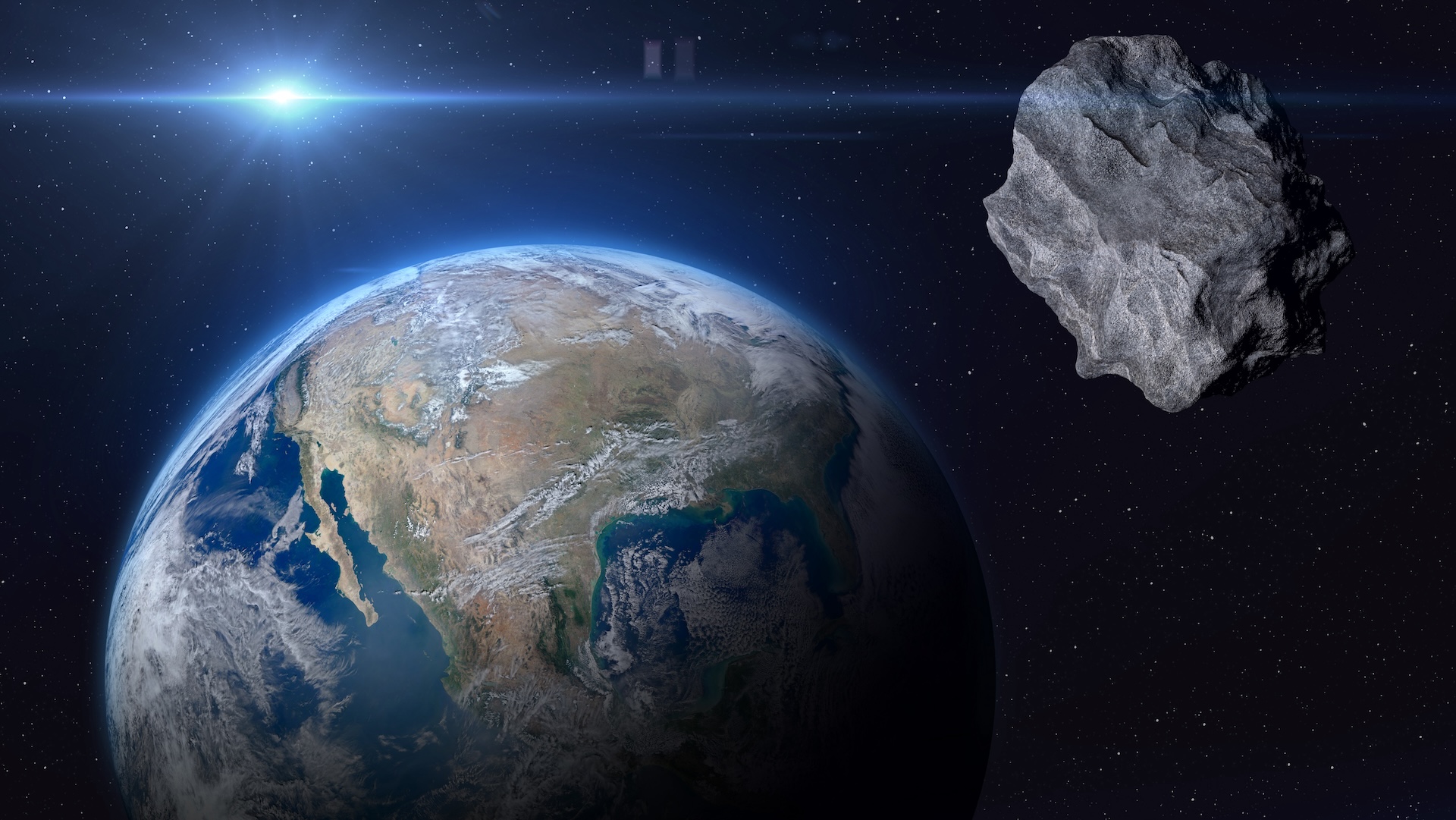Earth's '2nd moon' escapes our planet's orbit — will it ever return?
The mini-moon 2024 PT5, which has been orbiting Earth for two months and is likely a chunk of the moon, will now drift away from our planet in an orbit around the sun.

A mini-moon that has been orbiting Earth for the past two months will peel away from our planet's orbit today (Nov. 25) as it prepares for a decades-long jaunt through the solar system.
The bus-size asteroid, known as 2024 PT5, is currently 2 million miles (3.2 million kilometers) from Earth and has begun to move away from our planet as it is overcome by the sun's gravity.
The space rock was spotted by the Asteroid Terrestrial-Impact Last Alert System (ATLAS) on Aug. 7 and snared by Earth's gravity on Sept. 29, making one complete orbit of our planet before now being snatched away by the sun. Objects that temporarily orbit Earth as natural satellites are known as mini-moons.
Where the rock came from is something of a mystery, but scientists have good reason to believe it is actually a chunk of the moon itself, likely ejected by an asteroid impact centuries ago.
"Given the similarity between asteroid 2024 PT5's motion and that of our planet's, scientists at NASAs center for near Earth object studies suspect that the object could be a large chunk of rock ejected from the moon's surface after an asteroid impact long ago," Josh Handal, a program analyst at NASA's Planetary Defense Coordination Office, wrote in a blog post.
"Rocket bodies from historical launches can also be found in such Earth-like orbits, but after analysis of this object's motion, it has been determined that 2024 PT5 is more likely of natural origin," Handal added.
Related: How many moons are in the solar system?
Get the world’s most fascinating discoveries delivered straight to your inbox.
Despite now being captured by the sun's gravity, this isn't the last we'll see of our temporary companion. The rock will swing back around for a farewell pass of the Earth in January, zipping by us at a much closer distance of 1.1 million miles (1.78 million km) and at double its current speed, before zooming farther into the solar system while orbiting the sun.
NASA plans to track this January flyby for a week using the Goldstone Solar System Radar antenna in California's Mojave Desert, which is part of the agency's Deep Space Network.
After the mini-moon has left, asteroid-watchers will have to wait until 2055 to catch the moon chunk again, when it is expected to once again make a partial lap around Earth.
Mini-moons like this one aren't just curiosities for space geeks, however. Research suggests that the rocks hold valuable minerals and water that could be used for rocket fuel, making them ideal "stepping stones" for companies preparing to mine asteroids.

Ben Turner is a U.K. based writer and editor at Live Science. He covers physics and astronomy, tech and climate change. He graduated from University College London with a degree in particle physics before training as a journalist. When he's not writing, Ben enjoys reading literature, playing the guitar and embarrassing himself with chess.


